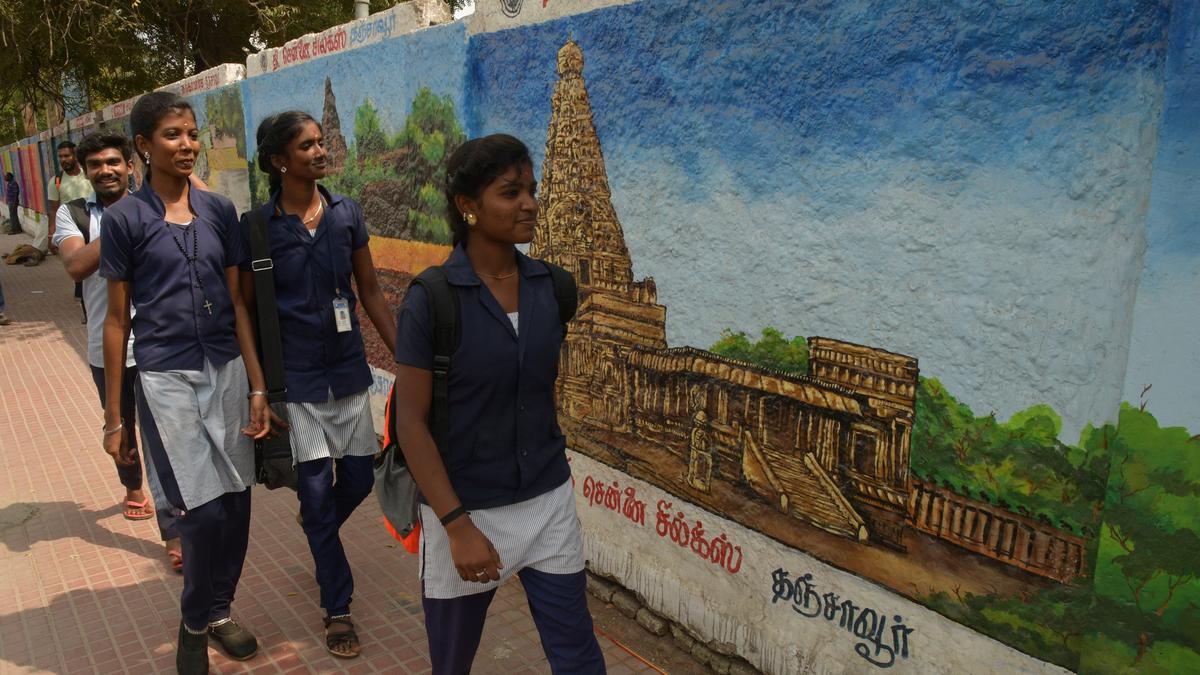
Among the permissible uses of surplus funds under the 1959 Act is the establishment and maintenance of universities or colleges (Section 66). Representational file image.
| Photo Credit: M. Moorthy
Recently, a political controversy erupted in Tamil Nadu on the issue of diverting temple funds for building colleges. Beyond the political debates, the issue throws light on a unique social justice model around the regulation of secular practices associated with religion. This model, predominantly developed in the erstwhile Madras Presidency, draws strength from a 200-year-old legislative framework which continues till date. It has gained more acceptance in south India. As elections approach in Kerala and Tamil Nadu, clarity on the issue will help diffuse attempts to polarise voters around it.
Religious endowments law
Through the Religious Endowment and Escheats Regulation 1817, the East India Company set up the earliest legislative architecture around regulation of religious endowments. When the British Crown assumed direct control over Indian territories in 1858, Queen Victoria issued a proclamation stating that the sovereign would restrict interference in religious affairs. This was necessary as there was concern about losing face from the 1857 Sepoy Mutiny, which was triggered by religious issues.
However, the withdrawal of the British government from religious affairs was not complete. In fact, in the Madras Presidency, various British officials argued for continued oversight of religious endowments. Finally, the British government settled for a balanced approach: the sovereign would not interfere with practices that were essentially religious, such as rituals, but would exercise control over the lands and secular aspects of the religious endowments.
The idea of the government supervising religious institutions came to be crystallised when the Justice Party was elected in 1920. One of the earliest legislative interventions by the Justicites was Bill No. 12 of 1922: Hindu Religious Endowments Act. When it was introduced in the Madras Legislative Council, it faced opposition, mainly due to the provision in the law that allowed surplus temple funds to be diverted for other purposes.
The nub of the issue was whether funds provided to a temple could be used for secular purposes. The matter was debated and settled in 1925, when the law was enacted. Since then, every revised version of the plenary law, including the current law — The Tamil Nadu Hindu Religious and Charitable Endowments Act, 1959 — has retained the provision of surplus funds.
Also read | Activist alleges ‘criminal misappropriation’ of temple funds by T.N. HR&CE Dept, Madras High Court calls for response
Section 36 of the 1959 Act permits the trustees of religious institutions to appropriate any surplus funds for any purposes listed under the law, with the prior sanction of the Commissioner. ‘Surplus’ means any amount remaining after adequate provisions have been made for the maintenance of the temple and training of its officials. The Act also empowers the Joint Commissioner or the Deputy Commissioner to appropriate funds in cases where the original purpose has become impossible to fulfil.
Endowments to temples have a long and rich history. Temples received lavish donations from the sovereign rulers from as far back as in 970 AD, when the Chola empire was at its peak. Historian Anirudh Kanisetti writes that Sembiyan Mahadevi, a Chola queen, made strategic donations of land and kind to temples. The practice continued during the Vijayanagara kingdom. Temples were not just places of worship; they were socio-cultural hubs and were also used for educational purposes. This is confirmed by the inscriptions on temple walls and the spacious mandapams (pillared halls) which were used to hold educational or cultural events. So the original intent argument would also support the theory of utilising temple resources for educational purposes.
The 1959 Act has been tested and upheld by constitutional courts. Among the permissible uses of surplus funds under the 1959 Act is the establishment and maintenance of universities or colleges (Section 66). These educational institutions are also required to make available the study of the Hindu religion or Hindu temple architecture. Seen within this framework, building colleges from temple funds is not only legal, but a logical extension of these provisions.
Social justice legacy
The controversy around the use of temple funds cannot be restricted to discussing legal propositions, however; it also carries ideological and sociopolitical significance. In the pre-colonial era, the motivation for the rulers to support large-scale endowments was that the temples acted as channels through which State resources could be allotted for important welfare projects. Through colonial rule, the British East India Company and the Crown viewed sovereign involvement in the management of temple affairs as necessary for reasons of revenue and maintenance of local control.
Over the last century, the Self-Respect Movement, which emerged from the Madras Presidency, viewed the regulation of temples and oversight of their resources as a critical feature of anti-caste reforms. Without this, there would have been no temple entry legislation in 1936 and 1947. Today, Tamil Nadu and Kerala are among the few States where governments have appointed priests from backward classes after a prolonged legal struggle.
Ultimately, any argument against government control of temple affairs would be striking at the root of social justice. The role of the government in ensuring that surplus funds are appropriated in a lawful manner is settled. Any reversal of this would only result in a set back of the long legacy of social justice and religious reforms that south India has pioneered.
Published – July 21, 2025 01:29 am IST
